Affiliate disclosure: This post may contain affiliate links. Please see our Privacy Policy.
Perennial vegetables, or crops that are planted once and harvested year after year, are the perfect way to turn a single spring’s worth of work into a lifetime’s worth of vegetables for your table. Annual vegetables, or crops that are planted again each year in the spring, tend to get all the attention…but why plant for a single harvest when you can plant for a lifetime?
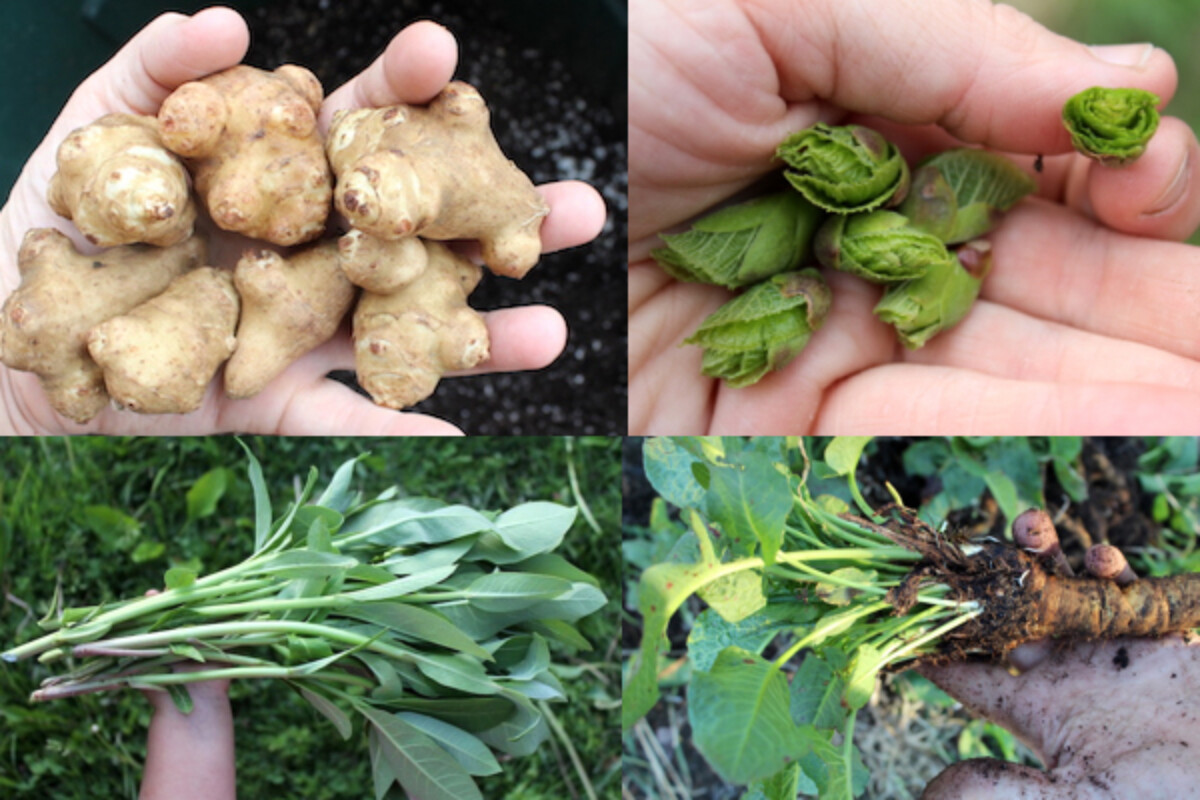
Table of Contents
- What is a Perennial Vegetable?
- Pros and Cons of Perennial Vegetables
- List of Perennial Vegetables
- Arrowhead (Sagittaria sp.)
- Asparagus (Asparagus officinalis)
- Caucasian Mountain Spinach (Hablitzia tamnoides)
- Chickory (Cichorium intybus)
- Chinese Artichoke (Stachys affinis)
- Dandelions (Taraxacum officinale)
- Daylillies (Hemerocallis fulva)
- Dock (Rumex Sp.)
- Fiddleheads (Matteuccia struthiopteris)
- Garlic (Allium sativum)
- Good King Henry (Chenopodium bonus-henricus)
- Groundnut (Apios Americana)
- Horseradish (Armoracia rusticana)
- Jerusalem Artichokes (Helianthus tuberosus)
- Linden (Tilia sp.)
- Lotus, American (Nelumbo lutea)
- Lovage (Levisticum officinale)
- Ramps or Wild Leeks (Allium tricoccum)
- Rhubarb (Rheum rhabarbarum)
- Scallion (Allium sp.)
- Sorrel, French (Rumex acetosa)
- Sorrel, Wood (Oxalis acetosella)
- Stinging Nettles (Urtica dioica)
- Milkweed (Asclepias syriaca)
- Sea Kale (Crambe maritime)
- Schisandra (Schisandra chinensis)
- Skirret (Sium sisarum)
- Turkish Rocket (Bunias orientalis)
- Walking Onions (Allium × proliferum)
- Watercress (Nasturtium officinale)
- Other Perennial Vegetables
Most gardeners follow the rhythm of the seasons, planting their veggies in the spring, weeding all summer, and harvesting in the fall, only to begin the cycle again the next year.
Perennial vegetables are different! Instead of planting them fresh each year, these plants are a long-term investment that pays off year after year.
Permaculture, or permanent agriculture, has been gaining a steady following for the past decade or so. While I love pouring over seed catalogs each winter, there’s something a little disheartening to me about starting a garden from scratch each year.
When we had kids, a desire to create something more long-lasting became even more important. Both as a way to create something to share with them year after year, and as a matter of practicality.
Little ones take time and energy, and there’s only so much you can tend in a year. By slowly adding to our plantings each year, we’re able to harvest huge crops without an overwhelming task list each spring.
What is a Perennial Vegetable?
Plants generally come in three types: Annual, Biennial, and Perennial.
- Annuals live for a single growing season to produce and then die back at the end of the season.
- Biennials, such as carrots, store energy in taproots in the first year and then send up a seed head in the second year. Most gardeners just grow those as annuals anyway, since the harvestable part develops in the first year.
- Perennials are long-lived plants that set down roots for decades, if not centuries.
Most of the vegetables you find in the grocery store come from annual plants, along with a few biennials. They’re planted fresh from seeds each spring, and the plants die back completely after one growing season. Perennial vegetables, on the other hand, are planted once, and the plant comes back year after year.
The most common example that you can find in the grocery store is Asparagus. Not only is asparagus a perennial, it actually can’t be harvested for at least 3 years after planting as the plants need time to establish roots for long-term harvests.
Pros and Cons of Perennial Vegetables
The main benefit of perennial vegetables is long-term harvests. Plant them once, and you can harvest them year after year. This allows you to add new areas to cultivation each year when you plant and gives me a sense of lasting accomplishment.
There are some downsides, however. Perennials require long-term maintenance plans, and you can’t just till up a whole field each year to start fresh and wipe the slate clean when weeds move in, or pests get out of hand. They aren’t exactly “plant it and forget it,” and you’ll still need to tend them each year if you expect them to thrive.
That said, perennial vegetables generally require much less maintenance than annual vegetable gardens. A good bed of mulch keeps the weeds down, and top-dressing with compost is often enough to maintain soil fertility. Since you’re not disturbing the soils each year, you’re not creating fresh openings for weed seeds, and the soil has a chance to establish a long-term equilibrium.
List of Perennial Vegetables
Since perennial vegetables are grown differently than most other crops in our modern industrial agriculture, many of them have been lost to history. You’ll only find a few varieties in the grocery store these days. Many more still live on surrounding monastery gardens, in the side yards of old babushkas and kitchen gardens that have long since outlived the farmhouses they surrounded.
Just because you can’t buy them in the grocery store doesn’t mean they’re not delicious. Some of the best food nature has to offer just doesn’t fit well into our modern, prepackaged shelf-stable world.
I’m focusing on those that can be grown in cold temperate climates like ours here in Vermont (zone 4), but if you live in a warmer climate there are even more options.
Arrowhead (Sagittaria sp.)
A new water vegetable we’re hoping to trial in the pond, Arrowhead produces tasty edible tubers that are prized by foragers. I’ve been looking everywhere for them locally, hoping to forage some, but then I recently learned you can easily cultivate them as a perennial vegetable in small bodies of water. Nothing like putting the pond to good use producing food (alongside our healthy crop of hard-working bug-catching frogs…)
The tubers are said to have a nutty, earthy flavor and cook like potatoes.
Arrowhead is hardy to zone 3.
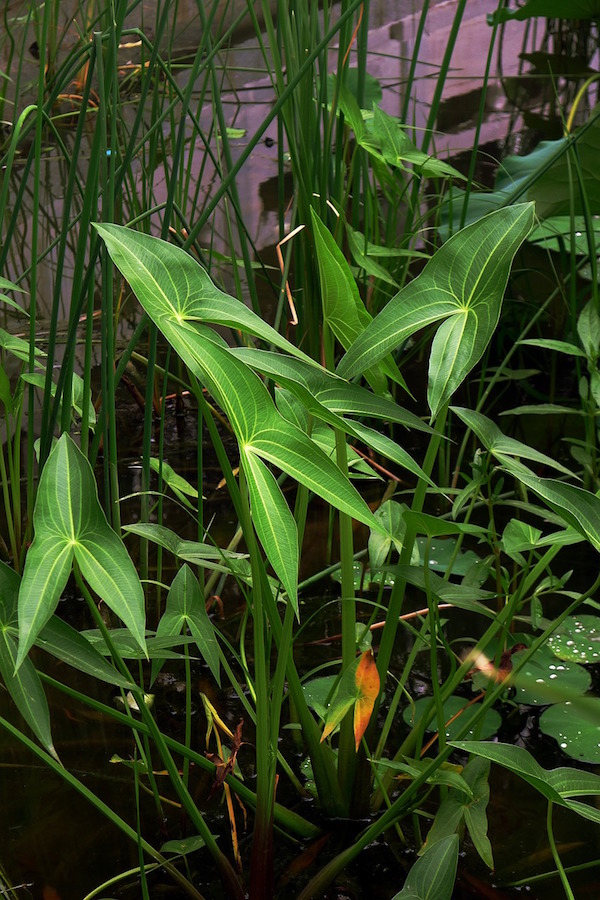
Asparagus (Asparagus officinalis)
One of our most loved vegetables, asparagus is really rewarding to grow at home. By the time asparagus gets to the grocery store it’s often dried out considerably and gotten a bit woody.
Homegrown asparagus is infinitely superior, in my opinion, but it’s an investment. You won’t be able to harvest for the first 2-3 years as the plants get established.
Generally, asparagus is grown from crowns or first-year bare-root plants. That cuts down on the time to harvest, but they can be expensive to buy. You can also grow asparagus from seed, and a packet of 50 to 100 seeds usually costs about as much as one or two bare-root crowns. Wild Asparagus is actually just cultivated asparagus that’s escaped, and the birds have spread the seeds, so it can be grown from seed even without care in the wild.
A seldom mentioned benefit of growing your own asparagus is the flowers. The plants are covered with tiny bell-shaped flowers in the summertime, and they’re a real haven for the bees. I love watching the bees work through the asparagus, their pollen baskets filled to the brim.
Asparagus is hardy to zone 3.

Caucasian Mountain Spinach (Hablitzia tamnoides)
When I first saw these in the Fedco catalog, I thought I’d had this perennial green in a former garden, then I realized I was confusing it with the New Zealand Spinach, which I particularly dislike. While new Zealand spinach is only a perennial in the deep south and far west (annual everywhere else), caucasian mountain spinach is much more cold hardy.
Hooray for new perennial vegetables! We’ll be cold-stratifying these seeds this winter and trying to germinate this new perennial vegetable in the spring.
According to Fedco Seeds:
“Too new to have an agreed-upon common name, this plant has everything else. Originating in the Caucasus Mountains, it is a very hardy perennial, growing 6–9′ long for 2–3 months in the very early spring when few other edible greens have surfaced. It’s also tasty: both early shoots and subsequent leaves make a delicious and tender spinach-like vegetable without any bitterness. Moreover, it’s beautiful, and was introduced into Sweden around 1870 as an attractive vine to screen houses with its heart-shaped leaves. And, finally, though it is best grown in sun to maximize its productivity, it will also do well in its native habitat, the understory of temperate forests. Best germinated with stratification, and slow-growing in the first year.”
Caucasian Mountain Spinach is hardy to zone 3.
Chickory (Cichorium intybus)
You don’t hear about the vegetable chickory much these days, but it’s making a comeback. Chickory roots are still ground and used to flavor coffee, especially from New Orleans. The greens of all varieties of chickory are also edible, and they also have edible flowers.
Belgian endive, escarole, and radicchio are all types of chickory, though they may be annual or perennial, depending on the cultivar.
Try this recipe for sauteed chickory greens, and if you’re looking for more ideas, the BBC has a list of recipes for using chickory.
Chickory is hardy to zone 3.
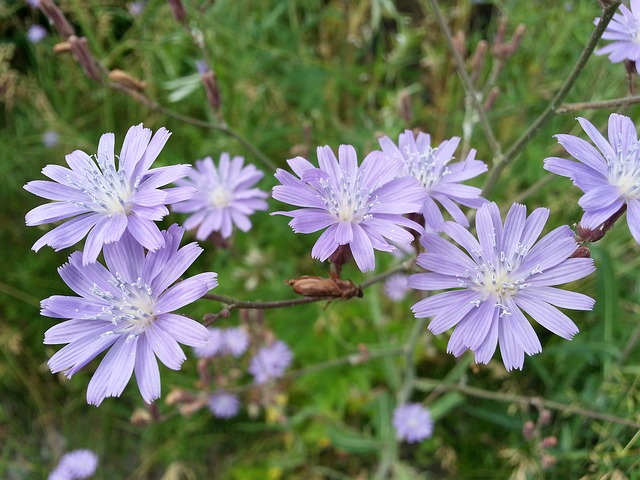
Chinese Artichoke (Stachys affinis)
We’re going to try growing Chinese Artichokes this coming spring, and I just learned about them from Eric Toensmeier’s book on Perennial Vegetables. It’s a mint relative that forms dense colonies of low-growing dense foliage. Beneath the soil, they form tiny tubers that are 1-2 inches across and have a mild, sweet crunchy flavor.
They’re supposed to grow in partial shade, and we have plenty of that here on our woodland homestead.
The book notes they’re hardy to at least zone 5, potentially colder, so we’ll be trialing them next year.
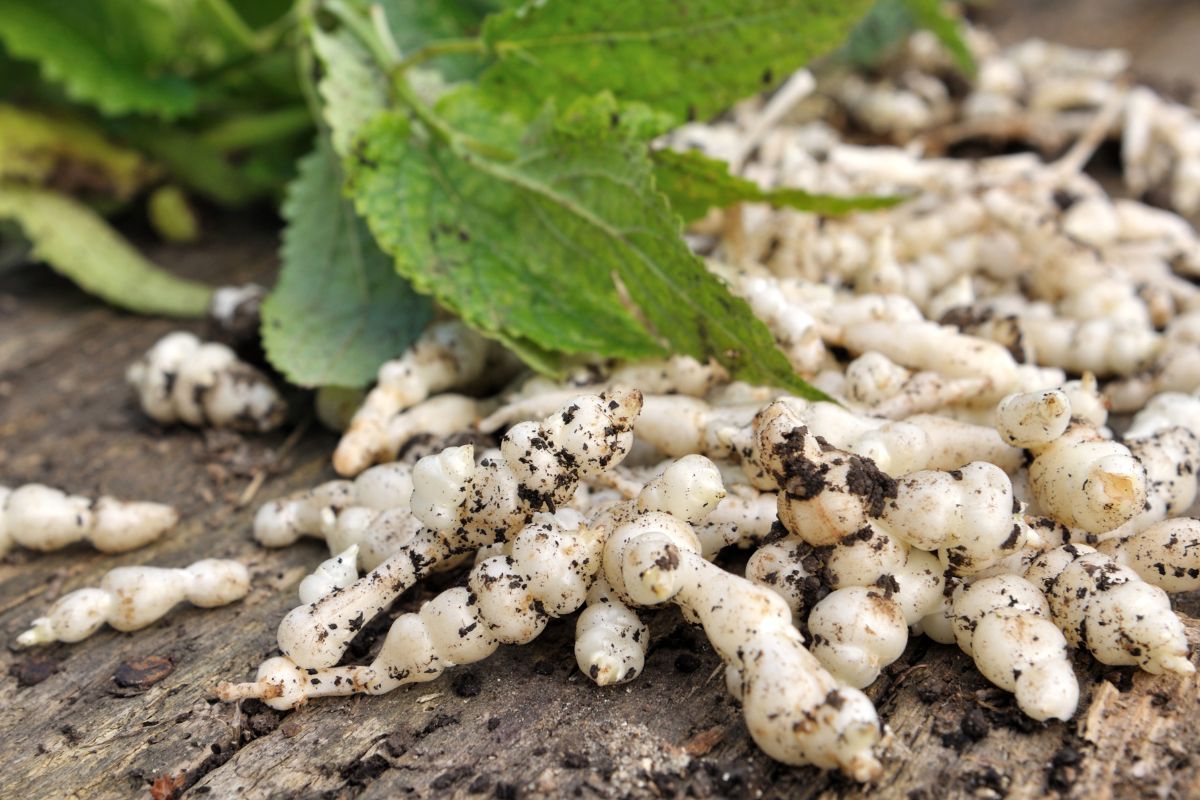
Dandelions (Taraxacum officinale)
I know, you’re skeptical now. Aren’t dandelions a weed? That’s all in the eye of the beholder!
Dandelions are edible and medicinal from root to flower, and if you can get past a few decades of brainwashing sponsored by the lawn care industry you’d come to see that dandelions are a darn fine vegetable. They’re also a perennial, meaning once they’re in place they’ll come back in the same spot year after year. Why not just embrace them?
Dandelion roots can be cooked like and eaten like carrots, or roasted and made into dandelion coffee or homemade herbal bitters. The greens fetch a high price at organic markets, and the flowers add lovely honey-like floral flavor to all manner of things.
Try making dandelion ice cream or old-fashioned dandelion wine. Even the unopened flower buds are edible, and they make a darn fine pickled dandelion caper.
Need more inspiration? Here are more than 30 ways to use dandelions for food and medicine. If you’re going to pull dandelions, do it to harvest them, and you’ll feel a lot better about the whole situation.
Dandelions are hardy to zone 2.
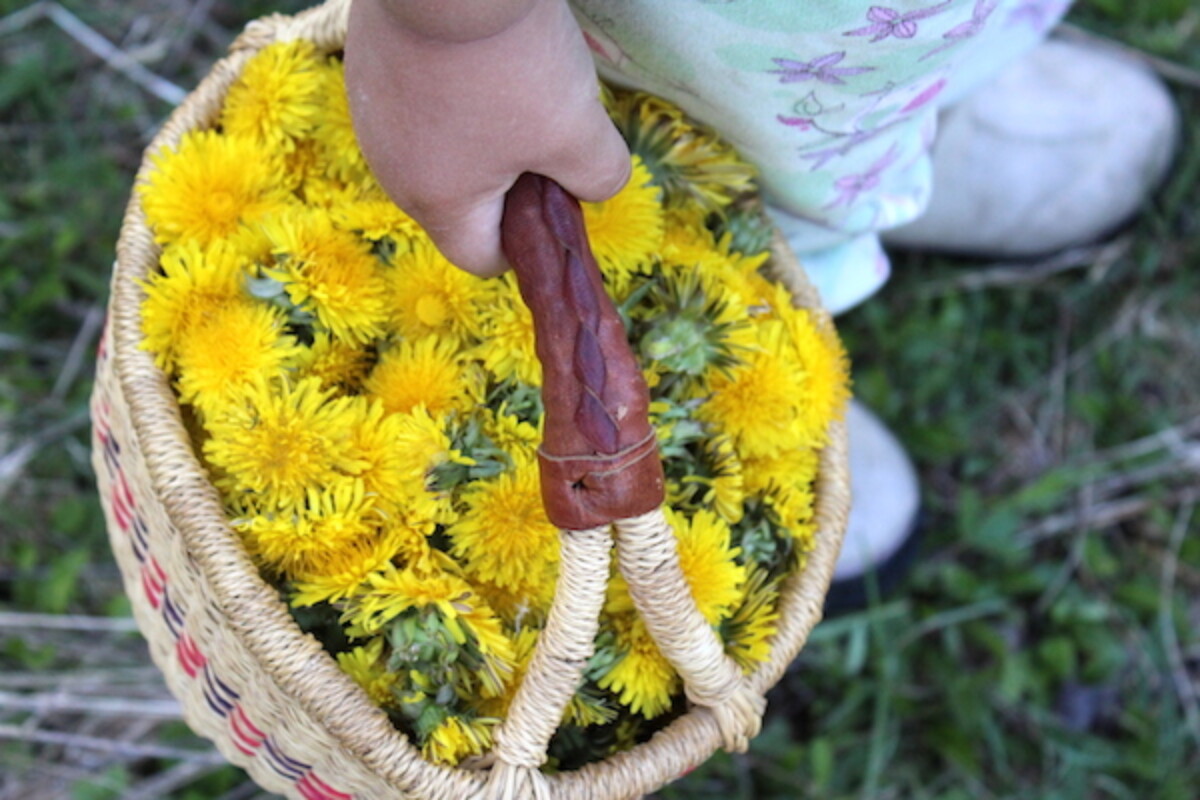
Daylillies (Hemerocallis fulva)
Another edible flower that’s not often considered for the table, daylilies are actually more than one perennial vegetable. Every part of the plant is edible from the tubers to the shoots to the flowers.
The flower buds are often cooked as fritters, but my favorite way to eat them is fresh off the plant once they’ve opened completely. They’re sweet just like snap peas, but with a lovely floral flavor that’s out of this world.
For tips on eating the other parts of daylilies, this article on Edible Daylilies by Hank Shaw covers just about everything you’d ever want to know.
Daylilies are hardy from zones 4 to 9.
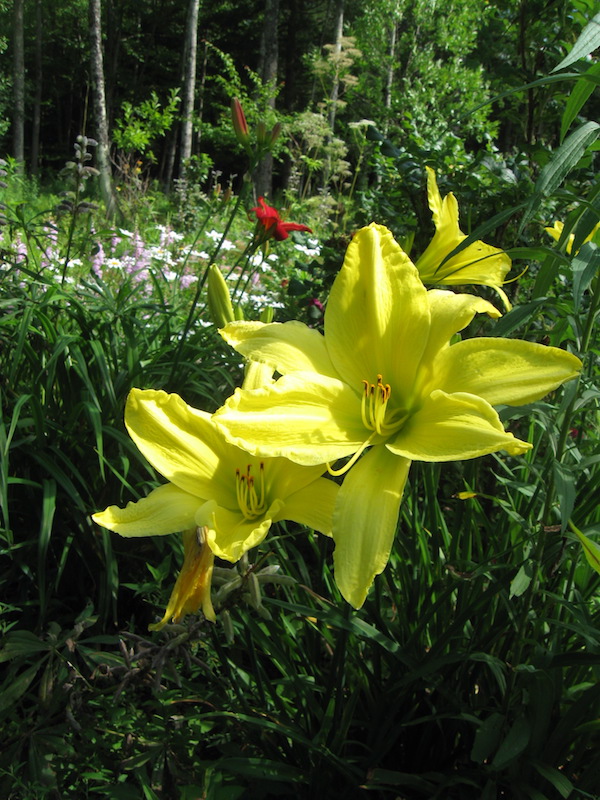
Dock (Rumex Sp.)
Dock is a very generic name for a group of perennial plants in the Rumex species. They’re more commonly called by their specific names, Yellow Dock or Curly Dock (Rumex crispus). Other common edible rumex species include:
- Rumex obtusifolius – Bitter Dock or Broad Leaf Dock, as the name suggests, this type is generally quite bitter and has large broad leaves.
- Rumex patientia – Patience dock or Monk’s Rhubarb, this species is mild and is eaten as a vegetable in southern and eastern Europe.
- Rumex triangulivalvis – White dock, willow dock or narrow-leaved dock is identified by it’s long, flat, narrow leaves that vaguely resemble willow leaves in shape (only much larger).
- Rumex longifolius – Yard dock, dooryard dock or northern dock, this species looks very similar to curly dock, but the flavor is considerably more bitter.
All of these dock species are edible and medicinal. The whole plant is useful, with the greens cooked as pot herbs, the roots used in medicinal preparations and the seeds of dock plants can be ground into a flour that’s a bit similar to buckwheat.
Dock can be really invasive, and it’s actually listed as an invasive species in many areas. Odds are you already have some growing in your yard, so there’s no need to go out of your way to plant it. We keep a few plants growing right outside the back door since they tolerate poor, compacted soil. In the spring months, I’ll harvest the leaves, and then the seeds later in the fall. For the roots, I just use any of the weedy ones that sprout up elsewhere.
A better known Rumex species is French Sorrel, which tastes very different but has a similar growth habit. That one’s also a perennial vegetable listed a bit further down.
Dock species are hardy to zone 3.
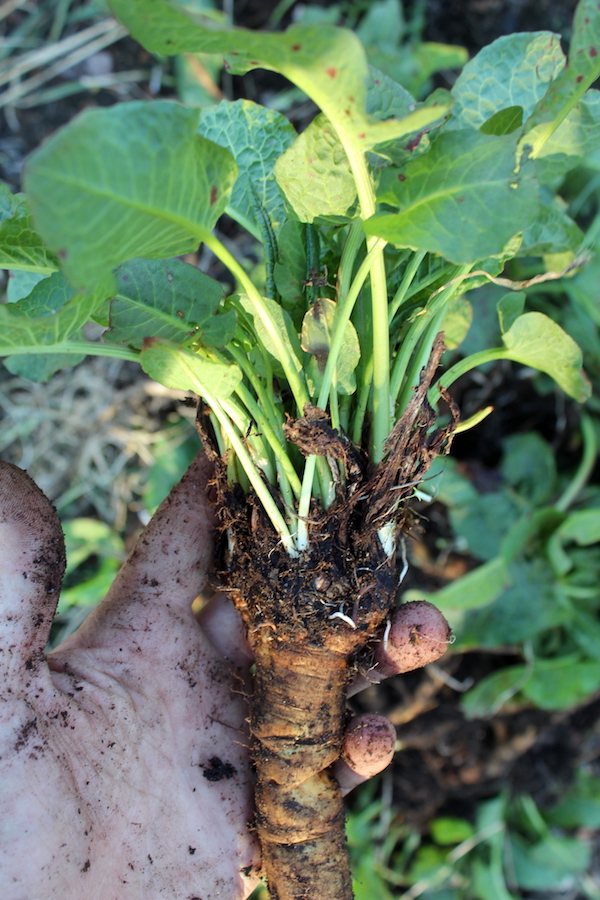
Fiddleheads (Matteuccia struthiopteris)
Most often thought of as a wild foraged edible, there’s no reason you can’t grow your own. When I set up my first annual garden in Vermont, I spent the better part of the early spring digging out these black fuzzy mounds from the soil. I tossed all the plant masses into a pile at the edge of the yard and went to work planting lettuce like any “normal” gardener.
A few weeks later, the pile sprouted into a huge mass of fiddleheads, along with half my yard. In the right conditions, fiddlehead ferns grow like weeds, and it actually took a good bit of work to keep them in check so I could grow anything else.
Like ramps, they’re only edible for a short period in the early spring before they’ve fully unfurled. That’s one of the things that makes them so special, they’re around when vegetable pickings are slim.
Setup a small fiddlehead patch in a shady, wet part of the yard, and you’ll be set on early spring greens for life. They taste quite a bit like asparagus, but they must be fully cooked before eating. That way you can forage fiddleheads right in your own garden.
We can pickled fiddleheads to extend their season, but you can also blanch and freeze fiddleheads easily.
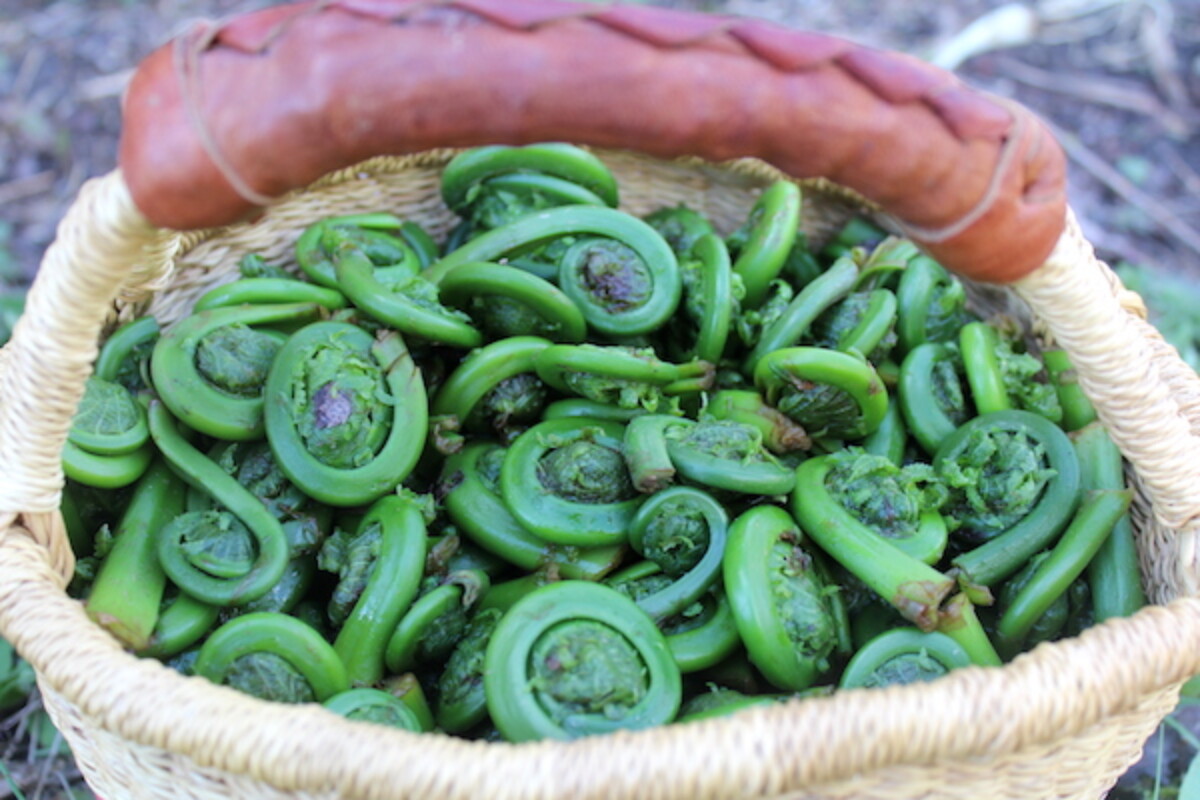
Garlic (Allium sativum)
While garlic is generally grown as an annual, it’s actually a perennial. Normally, garlic is planted in the fall, overwintered in the ground, and harvested the following summer. Unharvested bulbs will die back in the late summer, only to resprout again in the fall (like freshly planted garlic).
The main problem with growing garlic as a perennial vegetable is that it forms dense clumps that need to be periodically divided and thinned. That’s convenient because you’ll always have a source of garlic cloves for planting from your thinned perennial beds.
We grow big patches of perennial garlic in our orchard, which helps keep pests off the trees. We’ll harvest garlic scapes in the spring as a bonus vegetable, eaten fresh, made into pesto, or canned as pickled garlic scapes. Or, often enough, we’ll let the scapes form bulbils and plant those as garlic “seed.”
Here’s everything you need to know about growing garlic as a perennial. Plus, a guide to choosing garlic varieties.
Garlic is hardy to zone 2.
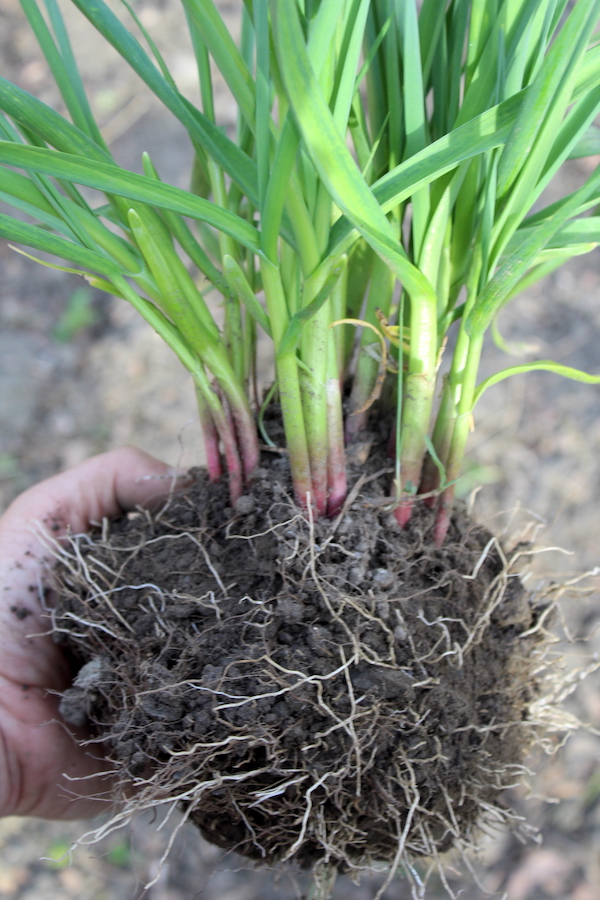
Good King Henry (Chenopodium bonus-henricus)
This tasty perennial vegetable is related to the south American grain quinoa (Chenopodium quinoa), as well as the common edible garden weed lambs quarter (Chenopodium album). While both of those are annual plants that must be replanted each year, good king henry is a perennial. It’s an old-time European vegetable that can still be found growing in medieval gardens surrounding monasteries.
It’ll grow in full shade or partial sun, much like most salad greens. For the best growth, plant good king henry in rich soil amended with plenty of compost.
The leaves, shoots and flower buds are all edible.
Good king henry is hardy to zone 3.
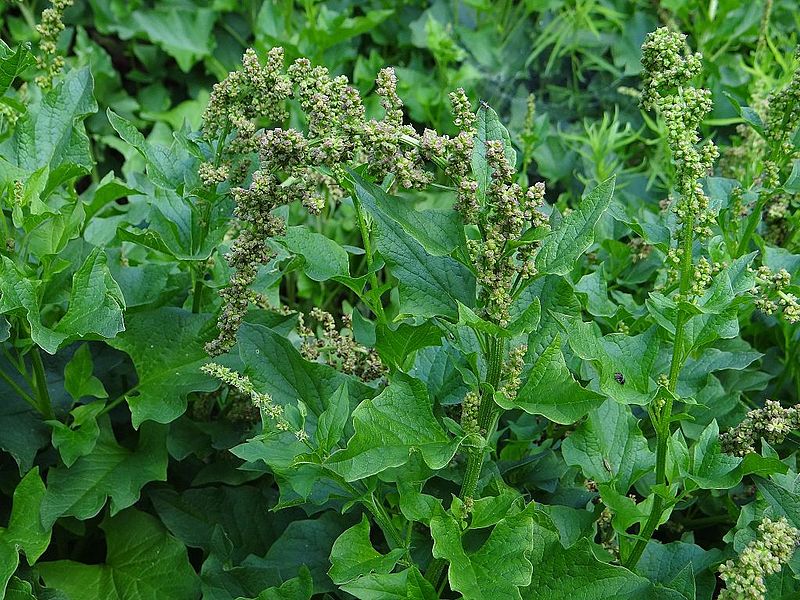
Groundnut (Apios Americana)
It’s not quite a nut, but this tiny nitrogen-fixing tuber is a hardy perennial vegetable that’s native to North America. The tubers grow like a string of pearls underground, and the plants vine up roughly 6 feet tall. The groundnuts themselves are high in protein, and they have a nutty, somewhat potato-like flavor.
Groundnuts can be foraged in the wild, and can be found in sandy soil alongside streams and other water bodies. They’re most commonly found growing up shrubs for support. The easiest way to grow them is to mimic this environment, ensuring moist sandy soil and plenty of space for the plants to climb.
Tubers are harvested in the fall, and left in the ground will continue growing in the spring.
Groundnut is hardy to zone 3.
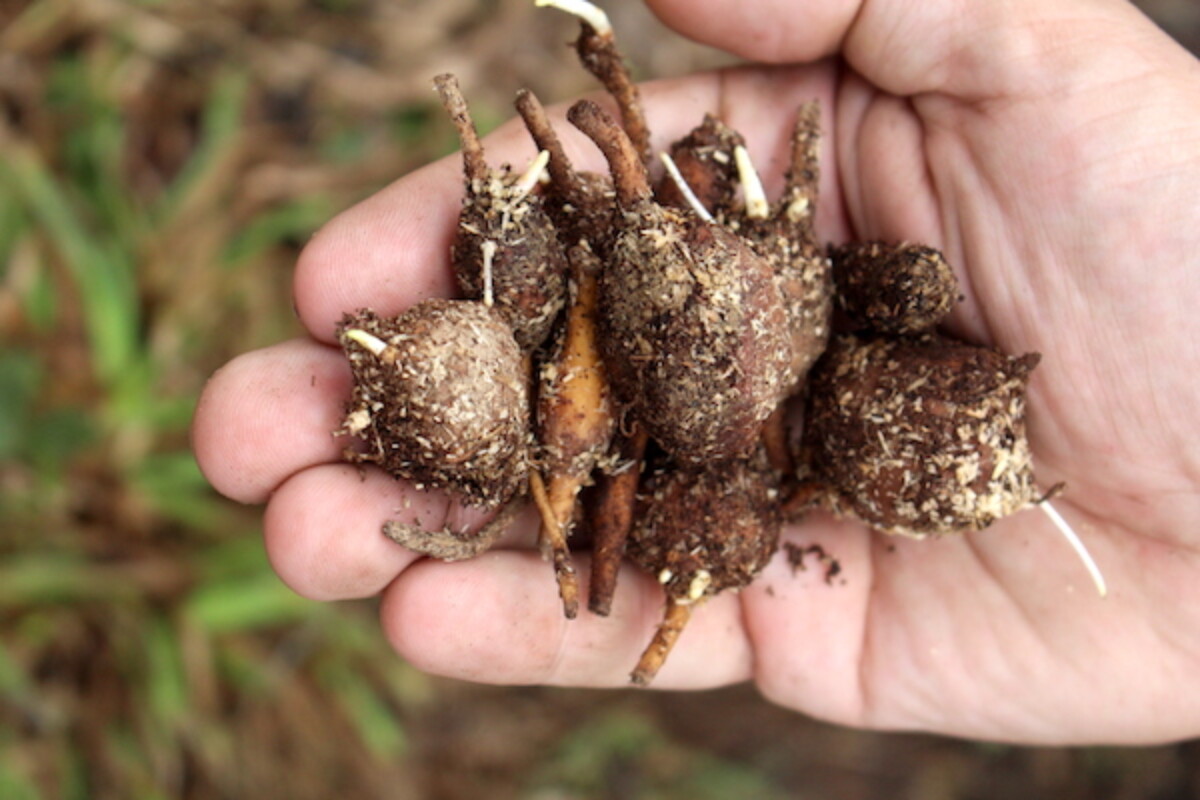
Horseradish (Armoracia rusticana)
Though it’s not commonly used today, old-school recipes often include horseradish to add a zip to foods. You’ll still find it on a good deli roast beef sandwich, and really I think it should get more play in our modern kitchens.
The roots are exceedingly easy to grow, and I’ve had great success just buying a hunk of supermarket horseradish and storing it in the back of the fridge until it sprouts. Later I found out that wasn’t necessary, and just popped a few hunks of the horseradish root in a pot. They sprout within a few days.
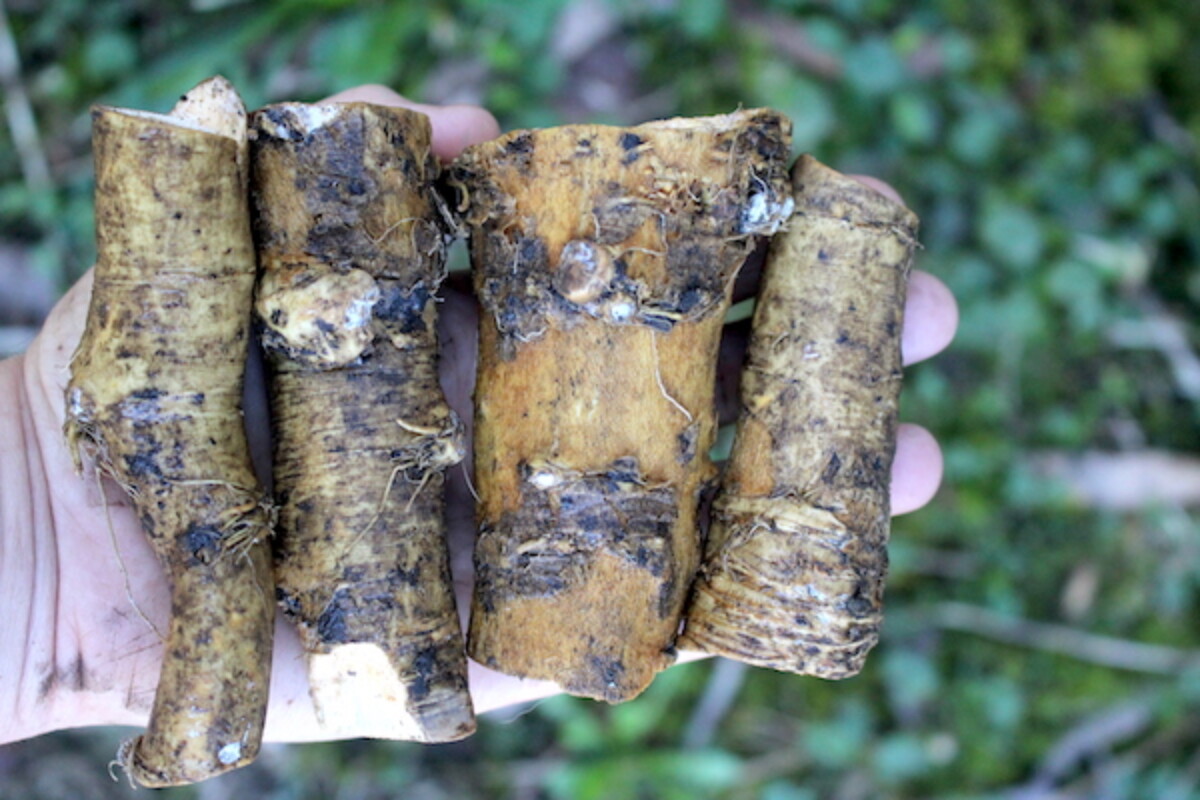
Even if you never harvest horseradish roots, I think they’re still worth growing, as a pest preventative and pollinator attractor.
Once they’re in the field, horseradish will help keep bad bugs at bay and defend the rest of your garden. They also send up flower stalks that act as a nectary for beneficial insects.
Horseradish is hardy to Zone 2.
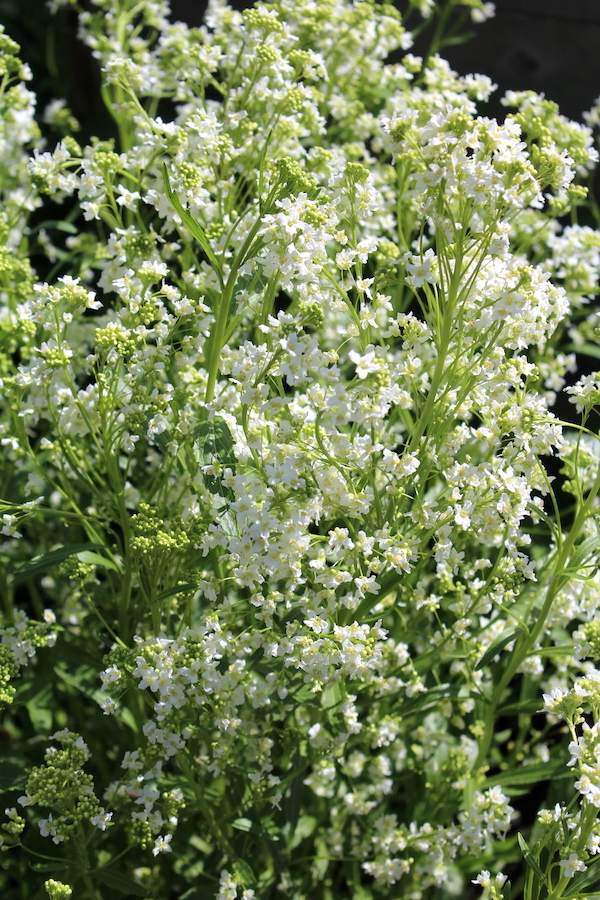
Jerusalem Artichokes (Helianthus tuberosus)
Though they’re not from Jerusalem, and they’re not artichokes, Jerusalem artichokes are a tasty perennial tuber. Also known as sunchokes, they’re a member of the sunflower family that’s native to the United States.
They generally spread through underground tubers, that more or less resemble a warty potato. The plant itself grows quite tall, sometimes 8-10 feet and eventually puts out sunflower-like flowers.
Once established, sunchokes spread vigorously and they can be difficult to kill. Just how I like my food plants, pest-free and resilient. Still, it’s good to keep them away from other crops because they’ll take over and choke out anything nearby.
They’re a good crop to try growing in large containers (ie. trashcans or totes). We keep a patch in our back forty and we can harvest them as we please with no tending.
When you dig them up, they’re mildly sweet and starchy, and you can cook them just about any way you can a potato. If you’re interested, here’s more on growing sunchokes.
Sunchokes are hardy to zone 2.
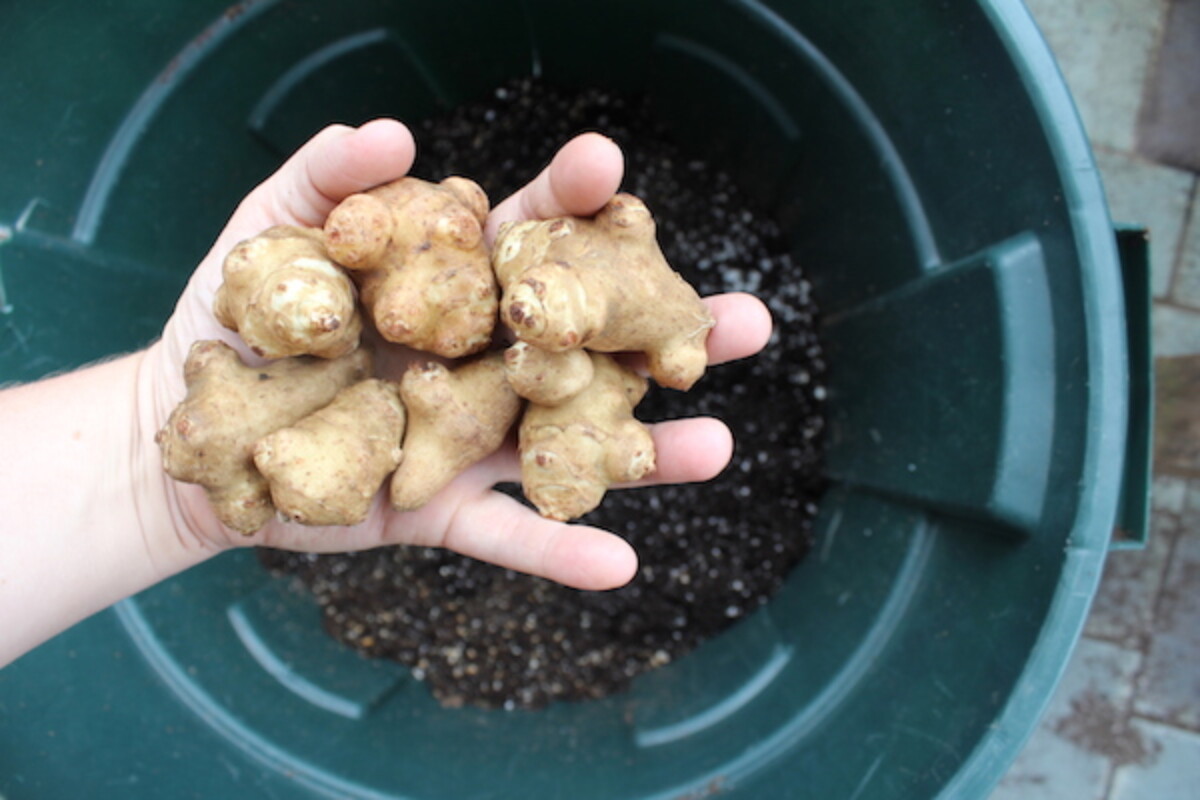
Linden (Tilia sp.)
I know, you usually think of vegetables as something small and low growing…but when you’re thinking perennial vegetables you’ve got to broaden your horizons. Linden is a tree, and a huge one at that. But it also has some of the tastiest leaves and leaf buds you can find on any plant.
The leaves themselves are sweet and juicy, a bit like sugar snap peas. They grow huge, about the size of your head, and you only need a few to make a tasty sweet tree salad.
Every part of the tree is edible, and survivalists even cook up the sweet inner bark (cambium). That said, it’s much more sustainable to just harvest the tasty leaves and let this salad tree grow big.
Linden trees are hardy to zone 3.
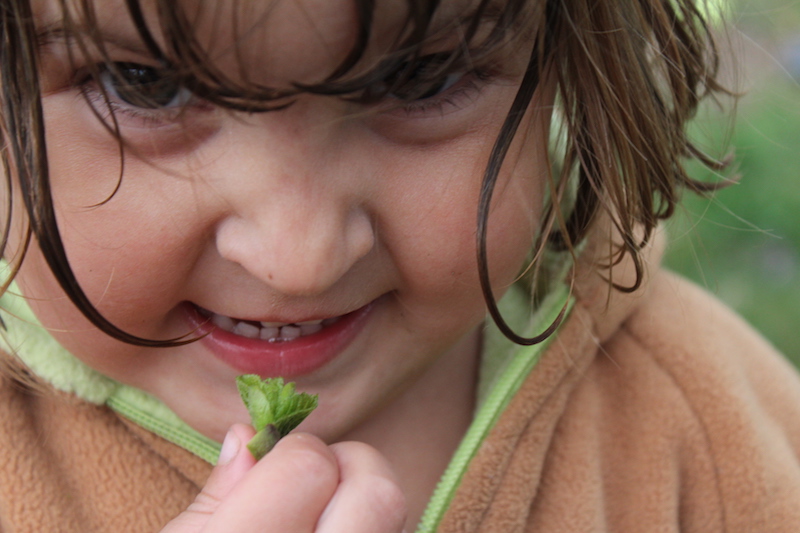
Lotus, American (Nelumbo lutea)
Though you don’t often think of water plants as vegetables, lotus is eaten all over the world. There’s a variety of American lotus that’s very hardy and we’ve planted some of the seeds in our homestead pond.
Growing lotus from seed is a bit tricky, as the plants have a defense mechanism to prevent them from sprouting in a less than optimal spot. Start by rubbing the hard seeds on sandpaper until the white endosperm is exposed and you’ve made it through the hard seed case, then soak them in water on a sunny windowsill for a few weeks. Once the leaves reach the surface of a tall jar, very carefully transplant them to the muddy bottom of a pond.
According to strictly medicinal seeds which sold us our seed:
“Ponds that do not freeze on the bottom are probably more likely to sustain good populations of this plant through the winter, but it is nonetheless extremely cold hardy, especially in comparison to its Indian counterpart (Nelumbo nucifera). This is the largest native American wildflower, with leaves that reach to 2 feet and large yellow flowers on tall stalks that rise handsomely above the water surface. The plant prefers still, shallow water with a mud bottom.”
Since American lotus isn’t often cultivated intentionally, most recipes are for wild foraged plants. Here are a few recipes for American lotus root:
American Lotus is Hardy from zones 4 to 10.

Lovage (Levisticum officinale)
I’ll admit, this one we don’t grow largely because I REALLY hate celery. That said, it’s basically perennial celery that grows up to 6 feet tall.
Every part is edible, including the seeds and roots. It grows in sun or part shade, and is generally low maintenance and undemanding.
Lovage is hardy to zone 4.
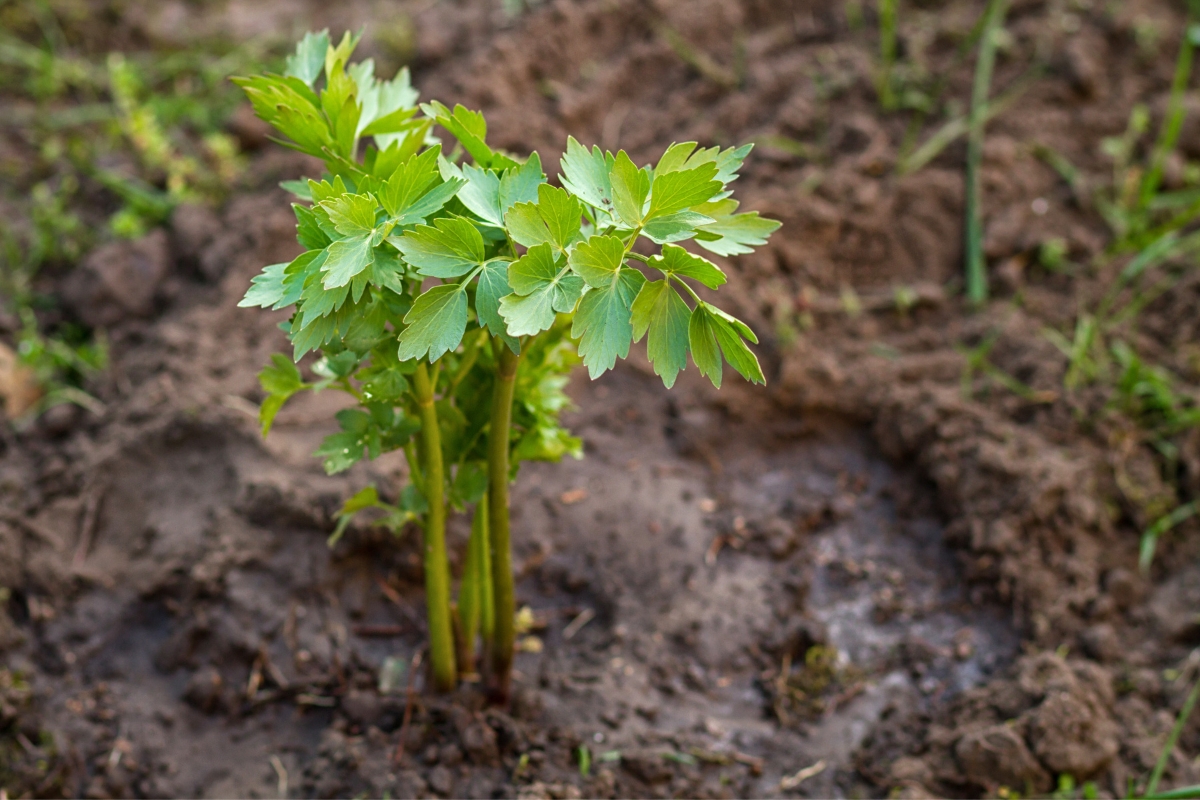
Ramps or Wild Leeks (Allium tricoccum)
A real springtime treat here in the Northeast, ramps are known as an “ephemeral” because they’re only around for a short time each year. They are perennial, coming back from the same stock each year, but they do all their growing in a short 6-8 week window in the spring after snow melts but before deciduous trees grow in their leaves.
Most people forage ramps in the spring months, simply because they don’t know you can grow them.
They need to be grown under deciduous trees, and shade throughout the summer isn’t optional. Beyond that, they can be grown from seed or transplant and they establish readily in the right conditions. We preserve ramps each year to extend the harvest, and both ramp pesto and pickled ramps are delicious.
Here are more detailed instructions on growing ramps if you’d like to give it a try.
Ramps are hardy to zone 4.
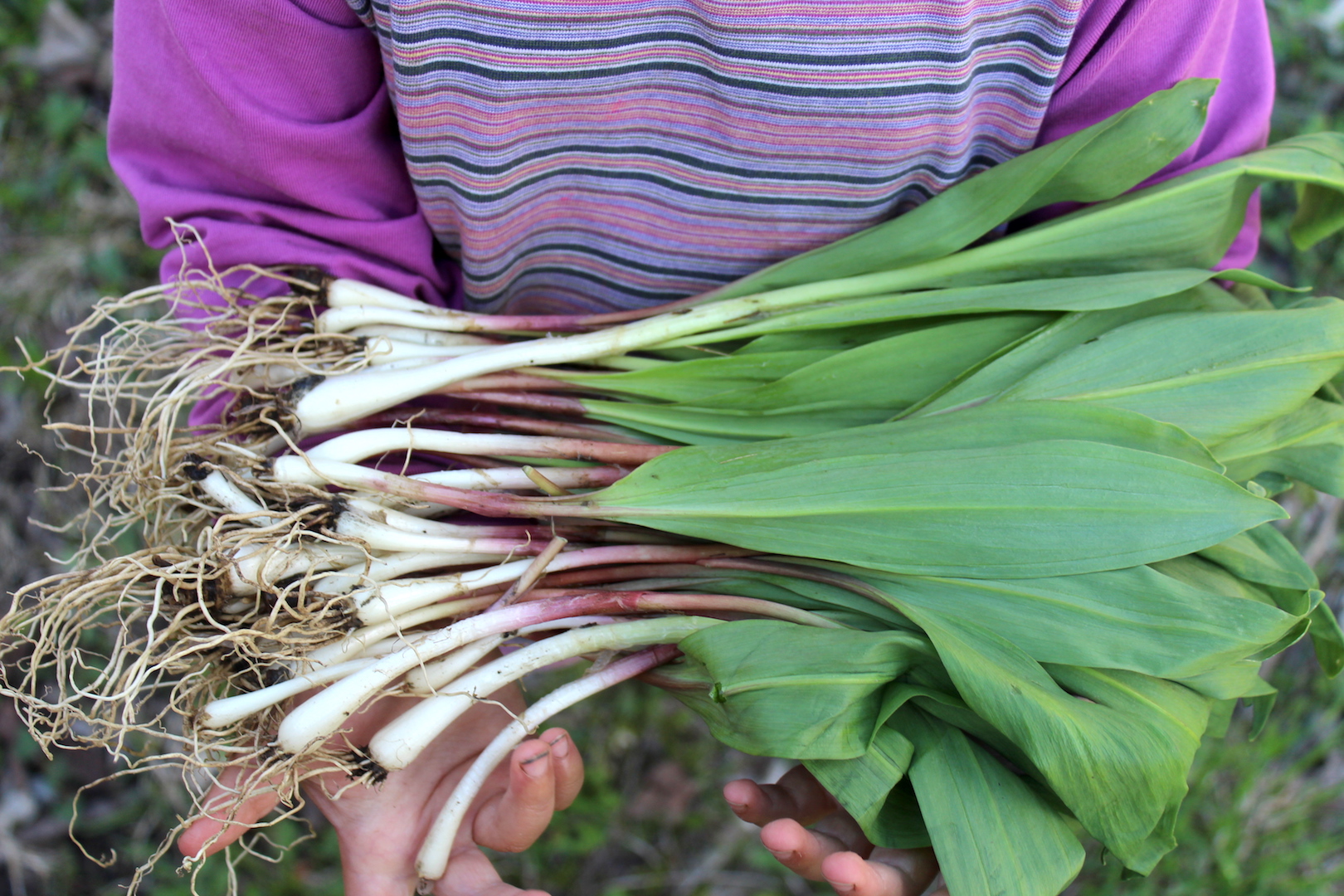
Rhubarb (Rheum rhabarbarum)
Though it’s eaten like a spring fruit along with strawberries, rhubarb is a vegetative stalk similar to chard or celery. The large orange crowns get bigger each year, allowing the rhubarb plants to come back bigger and more productive each spring.
The roots have been used medicinally for centuries in Asia, and it’s only in the last hundred years or so that people started eating the stalks. I’m glad tasty strains were discovered because I wait eagerly for the first shoots each spring.
Most people are familiar with strawberry rhubarb pie or rhubarb custard pie, but there are actually quite a few ways to use rhubarb, both sweet and savory. It’s particularly tasty braised with meat, and middle eastern cultures have a number of savory rhubarb recipes, like this Persian Lamb and Rhubarb Stew. It brews up nicely into a rhubarb wine or rhubarb mead, and I’m fond of a decorative rhubarb upside-down cake I make each year.
Though it’s often grown from divisions, you can also grow rhubarb from seed.
Rhubarb is Hardy to zone 3.
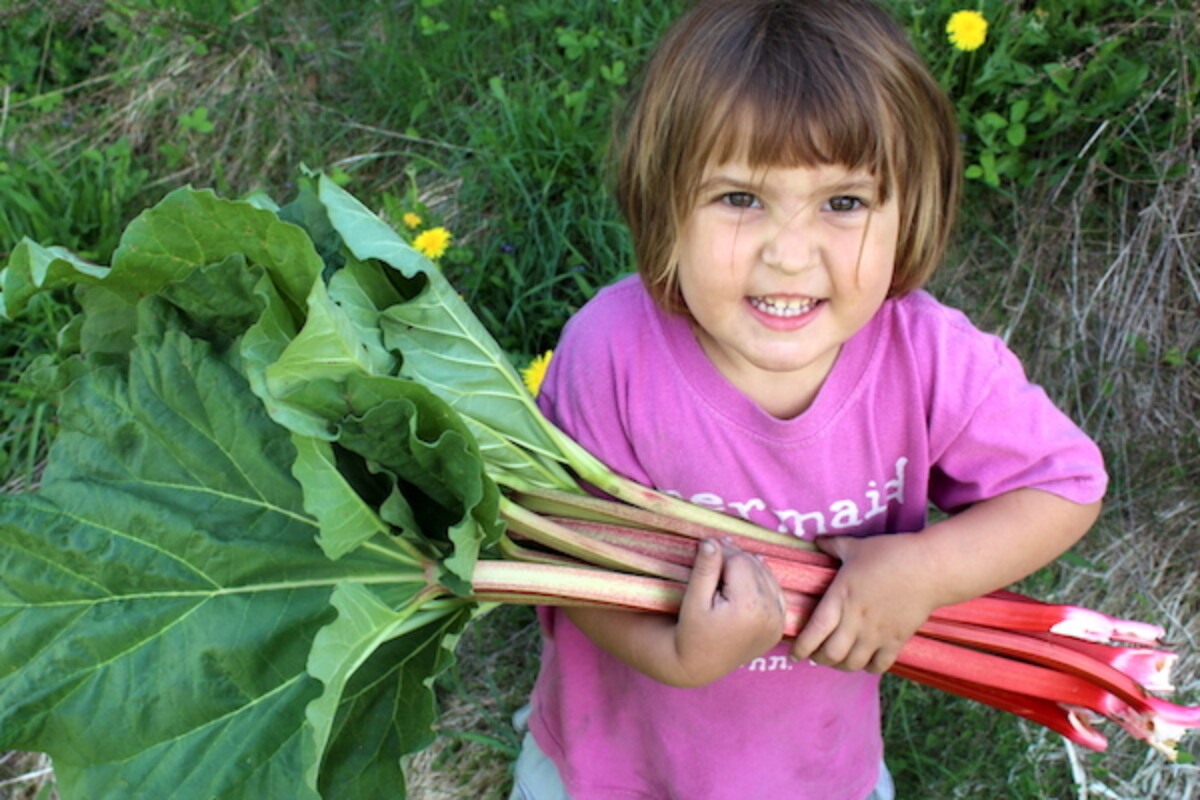
Scallion (Allium sp.)
Though they’re most commonly grown as annuals, those green bunching onions you see in the store are actually a perennial vegetable. In the first year, they remain small, and they’re perfect for chopping into stir-fries or, my favorite, homemade scallion pancakes.
After that though, scallions get big! We forgot to harvest a patch one year and I learned they’re perennial more or less by accident. The next year our tiny scallion plants went from 1 foot tall to nearly 5ft fall with huge stalks (still hollow) and utterly gigantic root systems.
I mentioned it to my friend Mari at Green Mountain Girls Farm, and she laughed because the same thing had happened to her and they harvested over 100lbs of 5ft tall scallions from one forgotten bed. It can be tricky to sell perennial scallions at a farmstand since they’re so large and they ended up processing them for on-farm meals.
Give them space if you’re growing this perennial vegetable!
Scallions are from zones 3 to 9.
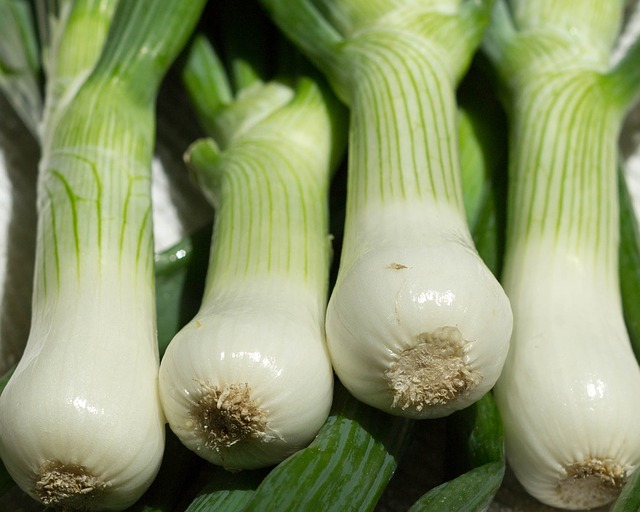
Sorrel, French (Rumex acetosa)
Another fancy salad green that happens to be a perennial vegetable, French Sorrel adds a lemony tang to salads and soups. A friend of mine was fond of turning his garden sorrel into sorrel ice cream for a really unique treat. That same refreshing lemon flavor is lovely in summer sorrel soup or just sprinkled in a fresh salad.
French sorrel will grow in sun or shade, and is related to curly dock (Rumex crispus), another perennial vegetable with a similar growth pattern but very different taste. It’s not actually related to woodland sorrel or sheep sorrel, both of which have a similar taste but a very different growth pattern.
French Sorrel is hardy to zone 3.
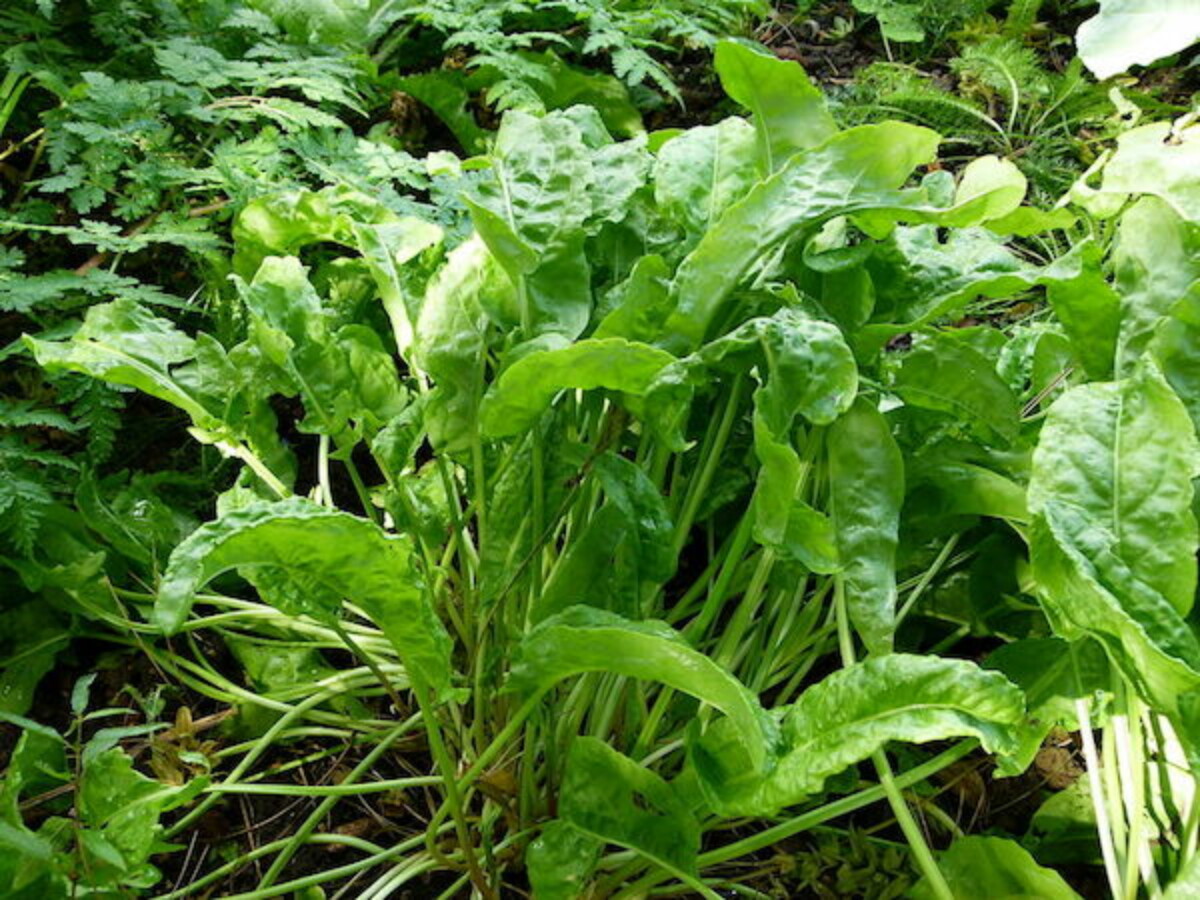
Sorrel, Wood (Oxalis acetosella)
Though it’s not related to french sorrel, common wood sorrel has a very similar taste. Instead of lance-shaped leaves, it has clover-shaped leaves, and dots the woodland floor here in the northeast. Other varieties are also common garden weeds, and people forage wild sorrel…simply by eating their edible garden weeds!
Many species of wood sorrel need shade to thrive, but some also thrive in full sun. Regardless of the variety, it only grows about 4 inches high. It’s easy to find here in the woods of Vermont, and we plant it for food in shady perennial beds near the house for easy harvest.
Wood sorrel is hardy to zone 3.
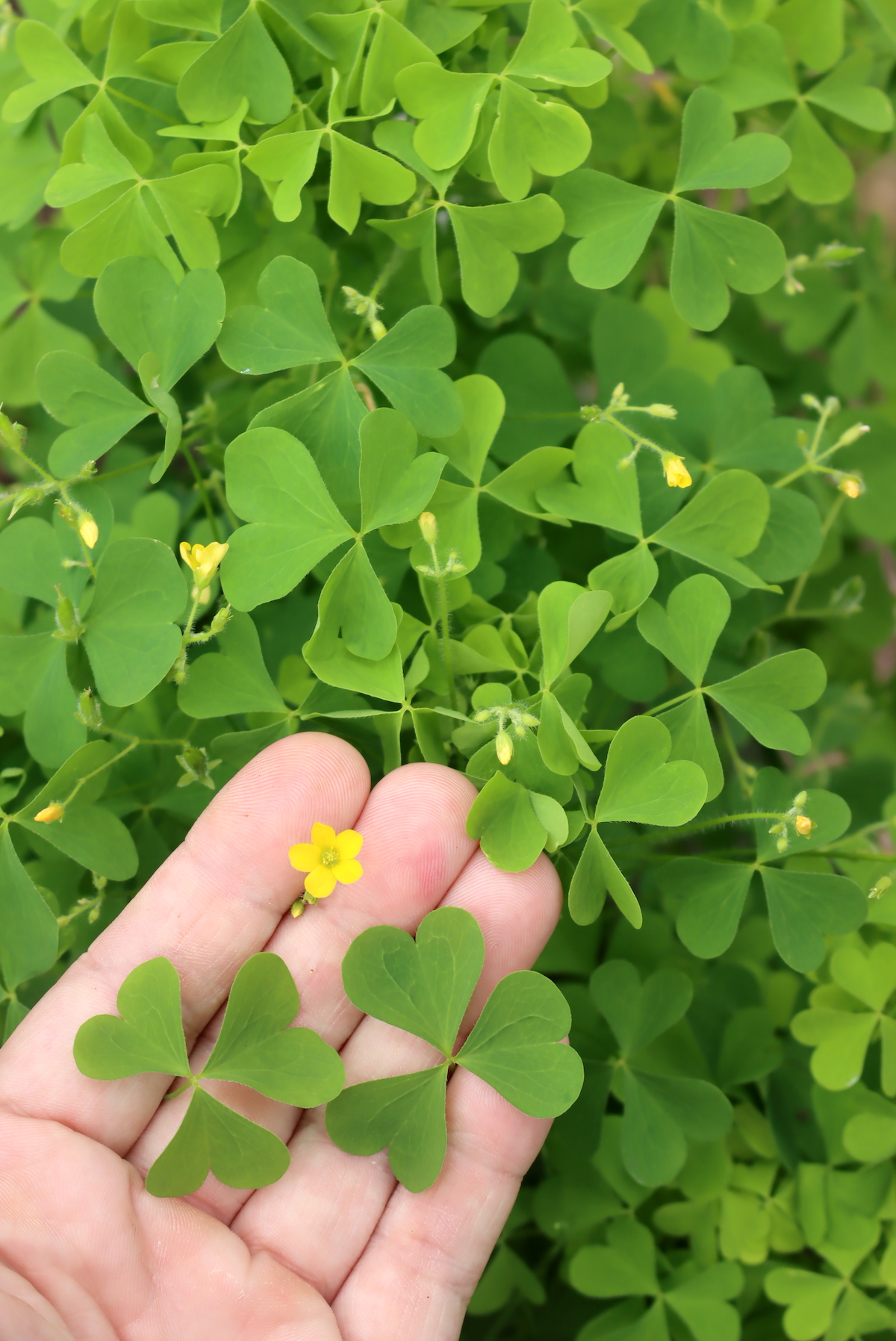
Stinging Nettles (Urtica dioica)
I have a love/hate relationship with stinging nettles, largely because my first experience with them involved inadvertently walking across a recently mowed patch of them in sandals…huge mistake. Demon weed is a good name at that point, and only later did I learn that all that pain (and literally days of burning discomfort) came from stinging nettles.
That said, if you harvest stinging nettles carefully with gloves they’re actually really delicious. Stinging nettle soup is spectacular, and my aunt regularly drinks stinging nettle tea as a health tonic. They’re high in minerals, and a quick cook kills their sting and makes them a great potherb, similar to spinach.
Stinging nettles are hardy to zone 3.
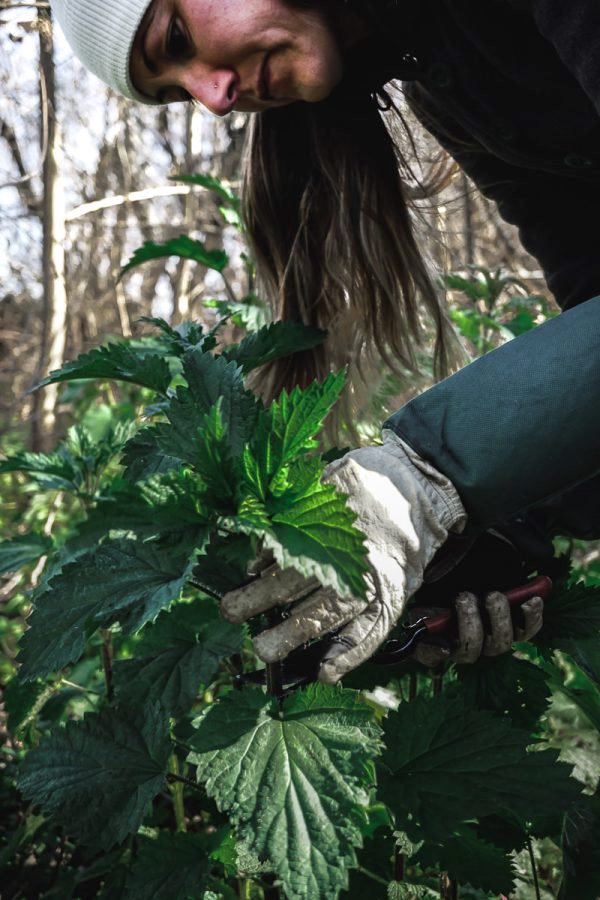
Milkweed (Asclepias syriaca)
Let me start by saying that there are a lot of species of milkweed, or plants that go by the name of milkweed, many of which are toxic. Common Milkweed (Asclepias syriaca) is edible, and it’s a tasty perennial vegetable. In truth, it’s actually MANY perennial vegetables since each stage of the plant’s development creates a uniquely flavored vegetable.
Early in the spring, the shoots taste like asparagus. A bit later the unopened flower buds taste like broccoli from another planet, and they can be steamed or pickled like capers. The small seed pods taste like okra, and then a bit later the immature seeds are a cheese substitute.
So many gifts from one tasty perennial vegetable!
Be aware that there are toxic look-alikes for common milkweed, so be 100% sure on your identification. Cultivation is an easier way to ensure you have the right plant. I’d highly recommend Samuel Thayer’s Book, The Forager’s Harvest, which contains detailed information on identifying and foraging milkweed (and avoiding the toxic lookalike called dogbane).
Common milkweed is hardy from zones 4 through 9.
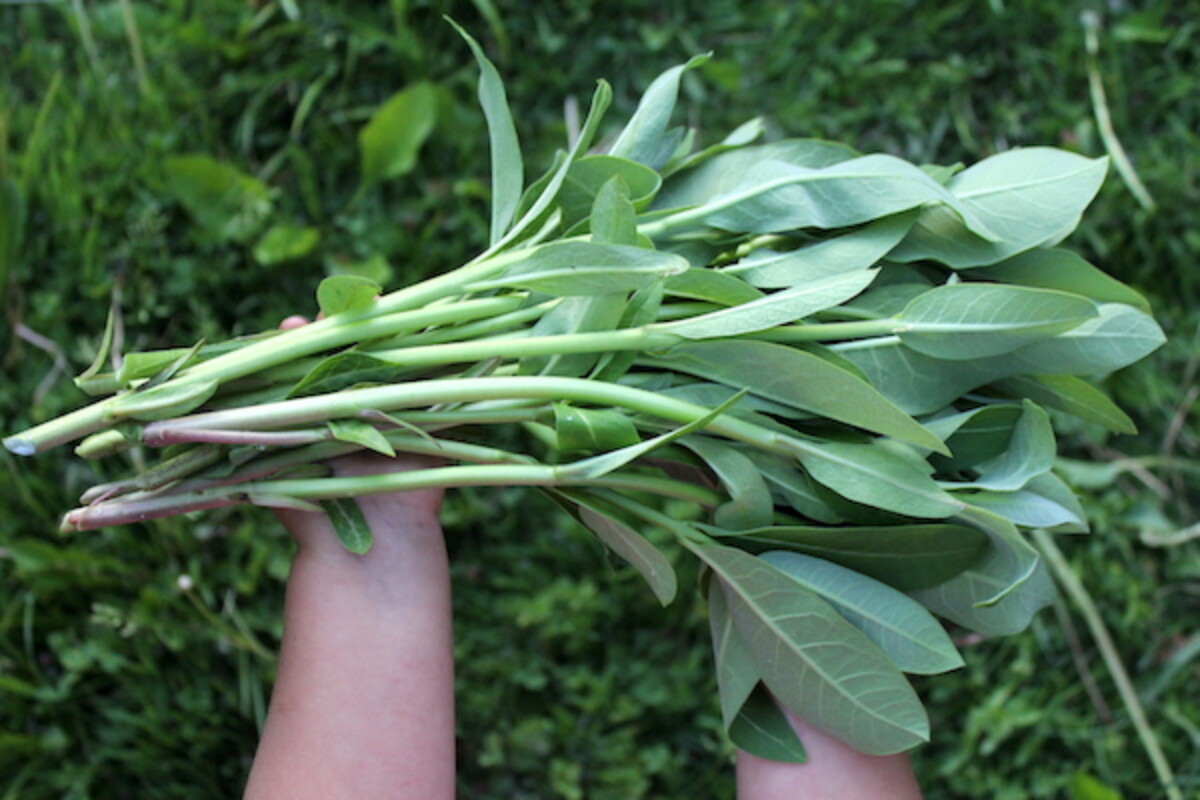
Sea Kale (Crambe maritime)
Related to garden kale and cabbage, sea kale is a perennial vegetable native to Western Europe. As the name suggests, it grows wild along the coast in cool northern areas. It’s most common in England, though some plants also grow wild in Ireland and Norway.
It made its way to the US with colonists, and it was reportedly grown in Thomas Jefferson’s garden. The problem is, sea kale doesn’t keep after harvesting and it’s easily damaged if packed or transported. With that in mind, it’s not a good candidate for the grocery store or market agriculture…so this old-time vegetable is rarely consumed these days.
If you want sea kale, you’ll have to grow it yourself. Sea Kale requires rich, deep, sandy soils and the seeds must be nicked before planting to encourage germination. Once you have a patch of this perennial vegetable established, it can be spread by root cuttings.
The shoots are cooked like asparagus, and the greens are served like kale. Of course, it’s best with lots of butter…
Sea Kale is Hardy in Zones 4 to 8.
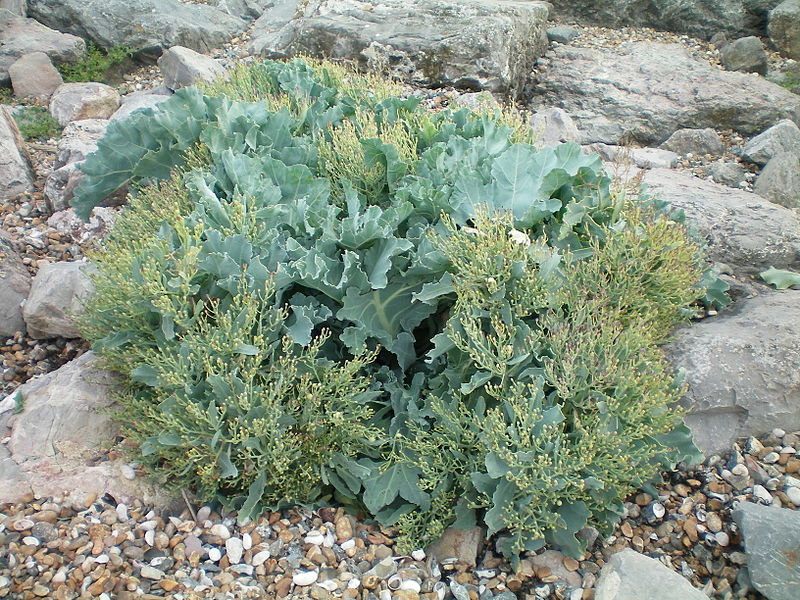
Schisandra (Schisandra chinensis)
Perhaps more of a fruit than a “vegetable,” I’m not exactly sure where to class Schisandra. We’re new to this one, and I’ll let you know when we get a harvest. It’s reputed to have all 5 flavors, and is commonly used in Chinese medicine. According to Fedco Seeds:
“Highly ornamental deciduous woody vine, to 25′, with tiny pinkish-white flowers that produce clusters of aromatic red berries in late summer. Called wu wei zi in China, meaning ‘five-flavor fruit,’ combining sweet, sour, bitter, salty and spicy. Can be eaten raw, cooked, dried, tinctured or made into wine. Traditionally used to treat asthmatic and other chronic coughs, insomnia and palpitations, schisandra is also adaptogenic, anti-inflammatory and immune-enhancing. A wonderful choice for the permaculture garden. Dioecious; male and female plants are needed for fruit production. Stratify seed in sphagnum moss for 3–4 months before starting in early spring. Grows well on a trellis but will climb most anything. Prefers well-drained soil in full to dappled shade.”
Schisandra is hardy to zone 4.

Skirret (Sium sisarum)
An old school vegetable, Skirret originated in China and was brought west in the Middle Ages. Commonly grown then, it’s basically a perennial version of parsnips but with a lower yield. They taste very similar, but Skirret grows thinner roots and produces slower. The thinner roots make it difficult to clean, and the low yields mean they’ll never be a commercial crop.
That said, if you want a plant it and forget it perennial parsnip like vegetable then this is the one to try.
Skirret is hardy to zone 4.
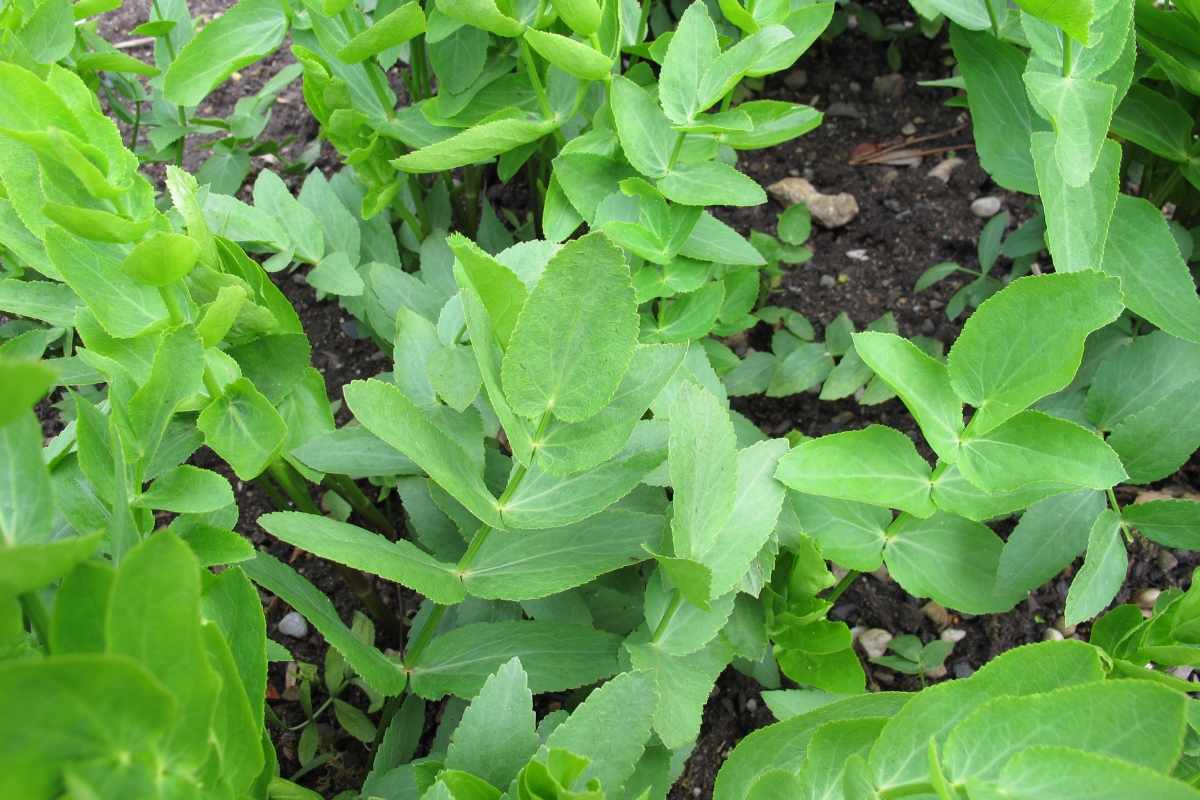
Turkish Rocket (Bunias orientalis)
We planted Turkish Rocket this spring but unfortunately, none of the plants made it. I blame the poor soil in the new garden bed, and we’ll try again next year. We picked up our seeds from Fedco, which describes the plant as:
“tender spicy mustard greens and florets for stir-frying throughout the month of May. Larger leaves are harvestable through the growing season, with another flush of new growth starting in mid to late August. In the perennial garden, these plants stick up for themselves as attractive mounds of bright pointed leaves that shade out weeds. Drought-tolerant with a deep taproot that brings up moisture and minerals, this Rocket attracts beneficial insects and can be used as animal fodder. Considered invasive in some locales, this doesn’t seem to be a problem in Maine. However, attentive deadheading will eliminate that possibility.”
Turkish Rocket is hardy zones 4 to 8.
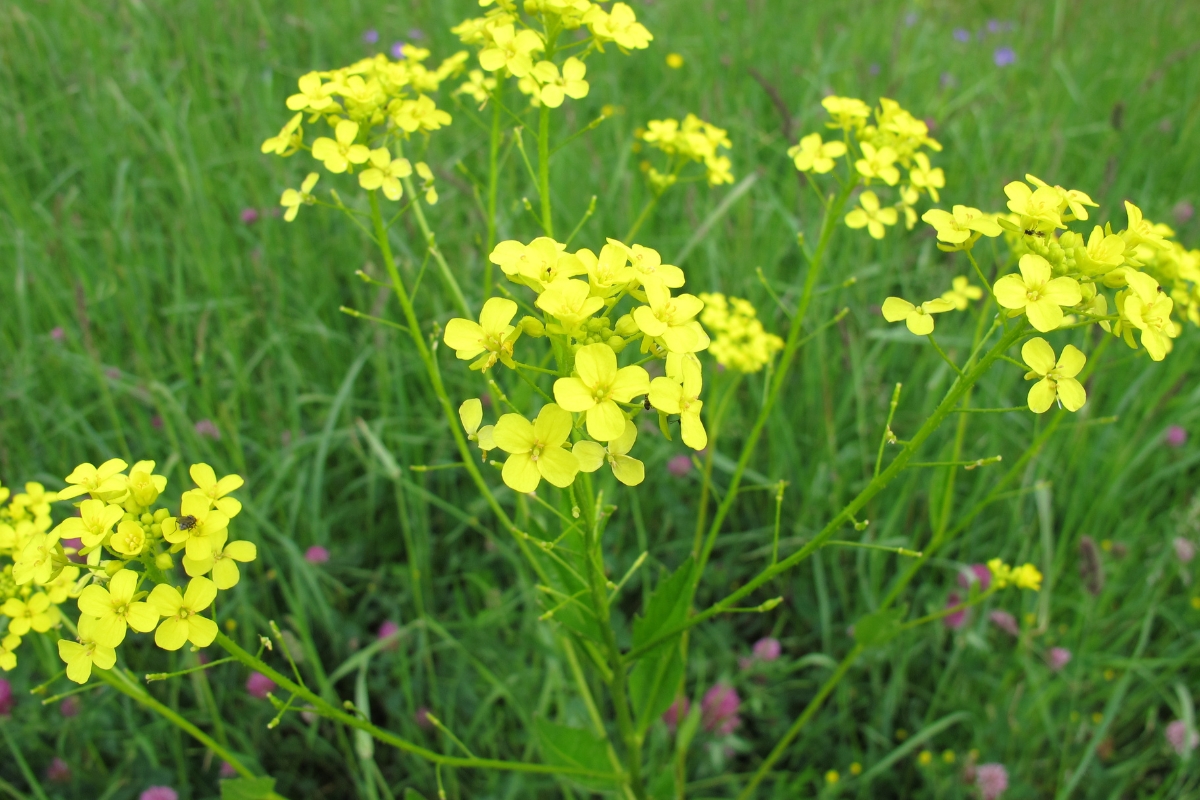
Walking Onions (Allium × proliferum)
A species of perennial onion, walking onions, set bulbs at the top and then tip over to replant themselves. Thus they’re named “walking onions” since they basically walk out from the mother plant. They’re also called top-setting onions or tree onions.
I’ve always known them as “Egyptian Walking Onions,” but I recently learned they’re not really from Egypt. It’s unclear where they come from, but the best guess is that the Romani people brought them from somewhere in India to Europe.
These days they’re grown just about everywhere, and they thrive with little care.
Walking Onions are Hardy in zones 3 to 9.
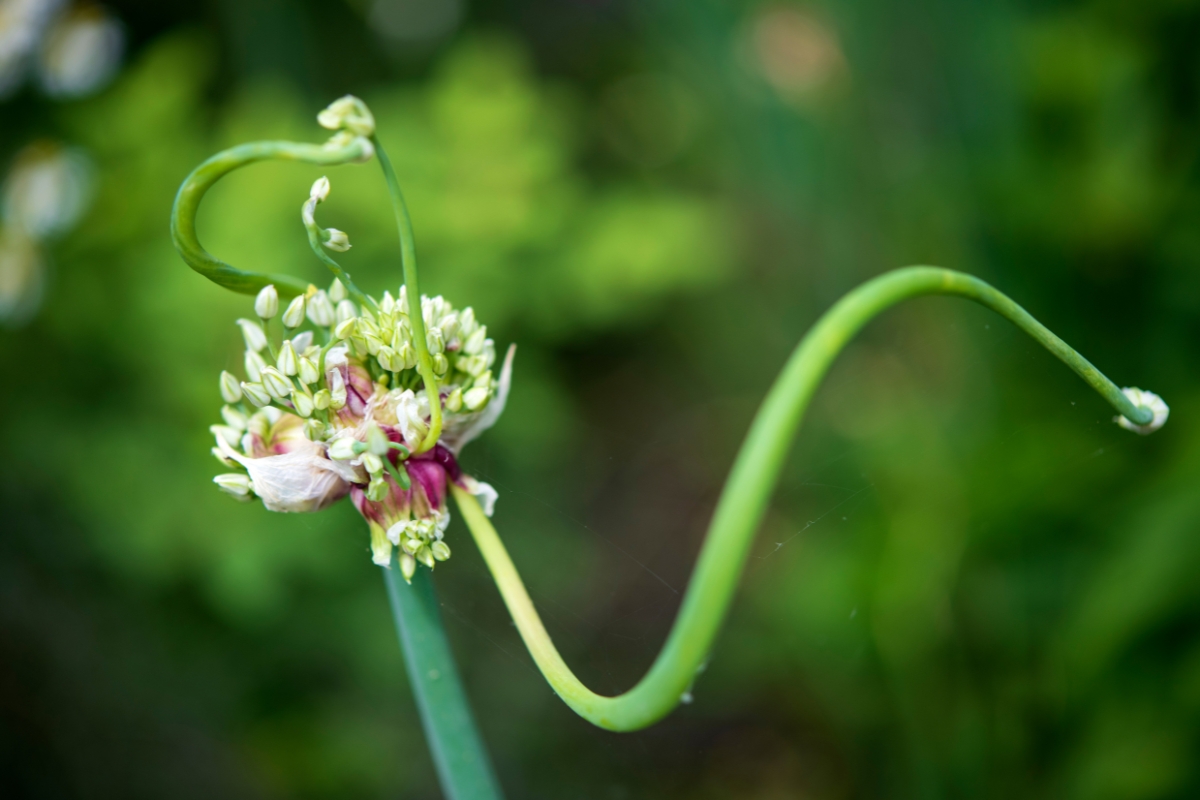
Watercress (Nasturtium officinale)
Common watercress is a tasty salad green that also happens to be a perennial vegetable. According to Temperate Climate Permaculture:
“This amazing plant does best when grown in an aquatic or wetland location. Grow it in clear, flowing water, and you have an amazing raw or cooked green with a pungent flavor. Grow it in poorer conditions, and it will purify the water and accumulate nutrients… a great addition to the compost pile…
Native to Asia and Europe, Watercress has been consumed for thousands of years. In fact, it is likely the oldest known green veg used by humans. It can be traced back to the Persians, Romans, and Greeks. Hippocrates himself grew watercress at the first hospital on the island of Kos around 400 BC. Watercress remained a commonly collected wild food throughout Europe. It was also common through Asia, but the history of Watercress in Asia is less known. It spread around the world with the European explorers who used it to prevent scurvy (a deadly vitamin C deficiency prevented due to Watercress’ high vitamin content).”
These days you can find watercress in the grocery store next to the expensive fancy salad greens…or you can just grow it yourself.
The tricky thing about watercress is that it needs a wet location, but it’s perfect for that patch of yard that forms lasting puddles after rainstorms. It doesn’t need to grow in water (though it can), it just needs wet soil. We grow ours along a seasonal stream that feeds our pond.
Watercress is hardy from zones 2 to 10 (provided it has enough soil moisture).
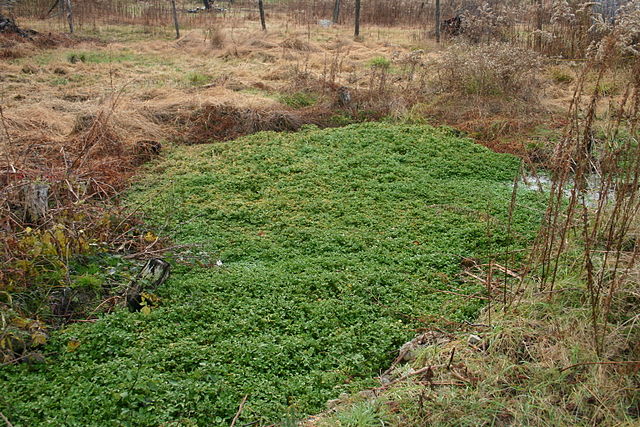
Other Perennial Vegetables
Thus far, I’ve only concentrated on perennial vegetables for temperate climates. We live in zone 4 here in Central Vermont, and every one of these perennial vegetables has (or has had) a home here on our land. All but good kind henry, sea kale, Turkish rocket, and french sorrel are still alive and thriving and we’ll be trying again with those three next year (perhaps with better deer protection…).
That said, there are A LOT of perennial vegetables if you live in a warmer climate. Zone 4 is pretty unforgiving, with winter temps that plunge as low as -25 F. Obviously if you’re in a place with a more reasonable winter, there are many more things you can plant once and harvest for a lifetime.
Things like scarlet runner beans and husk cherries that we grow as an annual in our veggie garden are a perennial in zones 7 to 10.
For more information on perennial vegetables that grow in all climates, I’d highly recommend the book Perennial Vegetables by Eric Toensmeier. In it, he covers over 100 perennial vegetables along with growing instructions and range maps. I consider myself an old hat at perennial agriculture, but we were able to find a number of new crops to try in this really comprehensive book.
These perennial vegetables discussed in Eric’s book are all hardy in zone 4 Vermont, and I’m excited to read more about them this winter and hopefully add them to our plantings in the coming years.
- Water Celery (Oenanthe javonica) pg. 87
- Spikenard (Aralia cordata) pg. 93
- Fuki (Petasites japonicus) pg. 100
- Scorzonera (Scorzonera hispanica) pg. 101
- Camass (Camassia sp.) pg. 157
- Giant Solomon’s Seal (Polygonatum biflorum var. commutatum) pg. 160
- Musk Mallow (Malva Moschata) pg. 164
- Fragrant Spring Tree (Toona sinensis) pg. 164
- Pokeweed (Phytolacca americana) pg. 176
- Wolfberry (Lycitum barbarum and L. chinense) pg. 186
Those are just the few that happen to be hardy to zone 4. The book literally covers 100 different plants, most of which are hardy if you live in a more reasonable climate than our cold northern homestead.
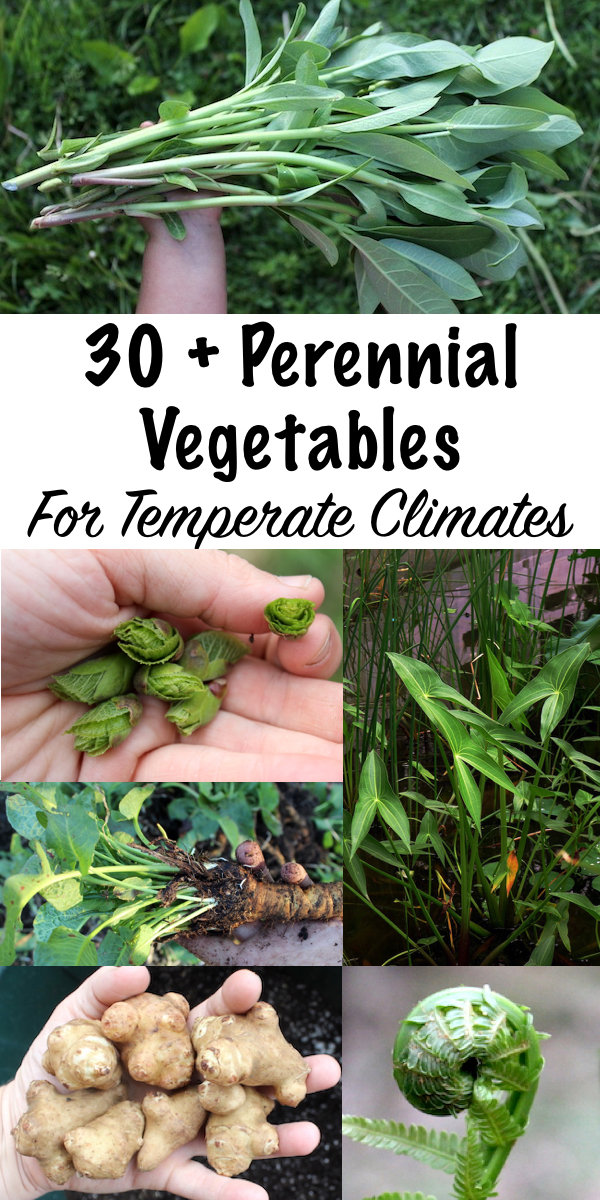
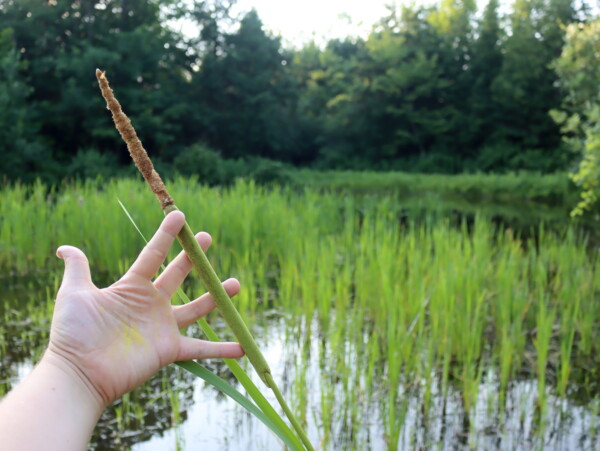
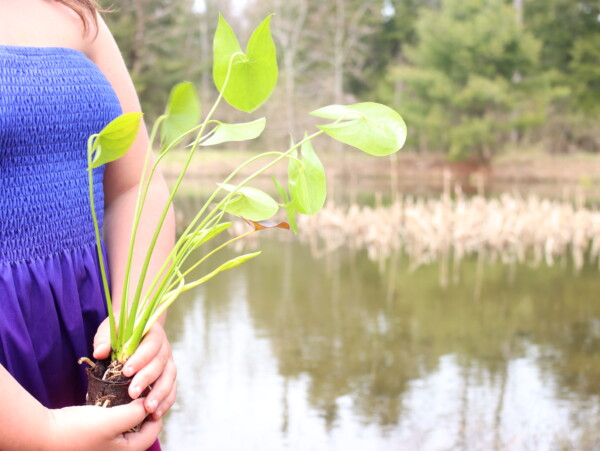
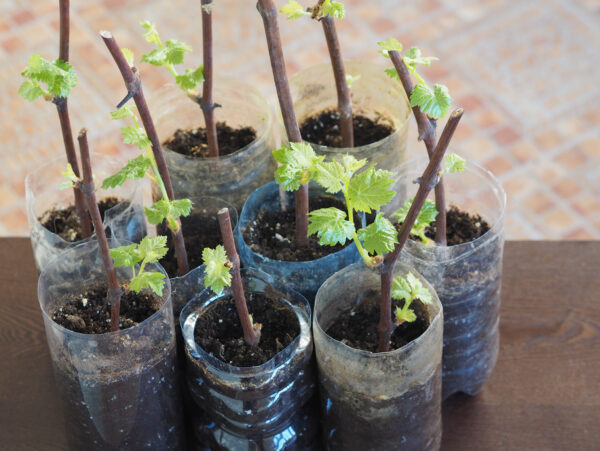
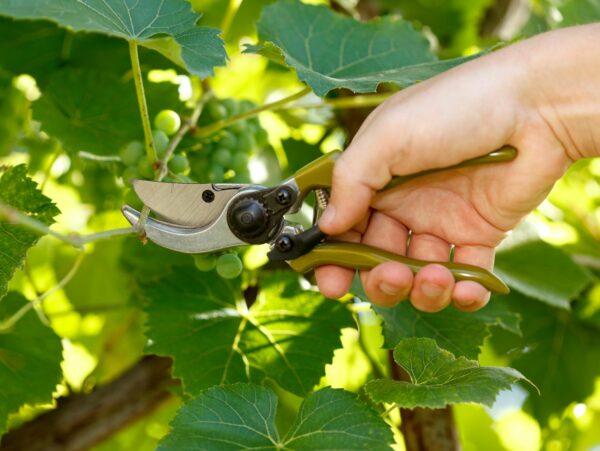










I grow Lovage in my balcony garden and I must correct you – it tastes nothing like celery at all!
It’s more like anise and parsley… it goes great with anything you would want to use parsley or other green herbs. The plants do look very similar; but don’t let that discourage you. It’s easy to grow and tastes really nice with yogurt sauce or on eggs.
I just purchased most of these seeds, except for the pond plants. I’m especially excited about the Linden.
That’s great! We hope you enjoy them.
Yikes!
Great post, really appreciate all of the information AND you need to edit this and remove the word “Gypsy”
Not a good term.
Hi Ashley
Are you familiar with Aaron Parker and Edgewood nursery in Maine. He offers some of the perennial vegetables you have talked about in this blog. I’m going to try this one this year.
DYSTAENIA (DYSTAENIA TAKESIMANA). This is the description from Edgewood nursery website. “ Vigorous perennial leaf crop that tastes a lot like celery. Rather long season, coming up as the snow melts it is available to harvest when almost nothing else is and then continues to produce through the summer with another big flush of growth in early fall. The leaves are highly nutritious with more total digestible nutrients then alfalfa. In mid-summer they starts blooming with large white umbels that are very attractive to many beneficial insects, especially wasps. Sun to Part-Shade. ” Also Stephen Barstow “the extreme salad man” grows it in Norway and it does well.
I’m excited to try it this year!
Christina
This sounds like an amazing vegetable. You will have to update us and let us know how you like it.
Any tips on where to source the seeds for these awesome plants you suggested?
Fedco Seeds is mentioned in the post and you can check them out at this link: https://www.fedcoseeds.com/seeds/caucasian-mountain-spinach-eco-perennial-green-2590 Strictly medicinal seeds is also mentioned and linked in the post. https://strictlymedicinalseeds.com/product/lotus-american-nelumbo-lutea-packet-of-7-seeds/ There are lots of other seed companies out there. If you aren’t able to find what you’re looking for at either of these just do a quick internet search for whatever seed you’re looking for and you should have an abundant supply of resources. I also buy a lot of perennials as plant starts at my local farmer’s market.
Thank you for sharing this very valuable info!
Thanks for a wonderful article. Here in upstate NY we have a lot of those vegetables already growing wild. I just want to add that you can eat grape leaves, as in stuffed grape leaves, and they can be preserved for later use.
So glad you enjoyed the article and thanks for sharing your suggestion about the grape leaves.
Thanks so much for all your helpful news letters. I have tried some of these perenials.you have given me more to look forward to. We are in zone 3-4 (on the cusp)so often limited. As I learn to embrace my weeds we eat much better. I am learning the stuff I used to pull out is much more nutritious than what I planted. Pine tree has some ” improved” varieties that have become favorites. While not perennial, I call them perpetual. If allowed they reseed. Magenta spreen lambsquarters has a hot pink iridescence that was stunning growing with pink bread seed poppies. Pinching new tips all summer made them look like small Xmas trees. They have a purslane that grows more upright, bigger leaves. Looking like a Jade plant. My favorite salad veg! When our lettuce and chard did poorly we feasted all summer on these. Mixed with wood sorrel, sheep sorrel, viola flowers, borage flowers, herbs, Tops from turnip and radish that had bolted. Prettiest, most nutritious, and delicious salads ever. All growing from seeds I started years ago. I now leave one edge of the garden a wild mix of precious “weeds”. Hope you try and enjoy these. I look forward to trying your suggestions. Thanks again and keep your news letters coming. Educating us all! Great public service!